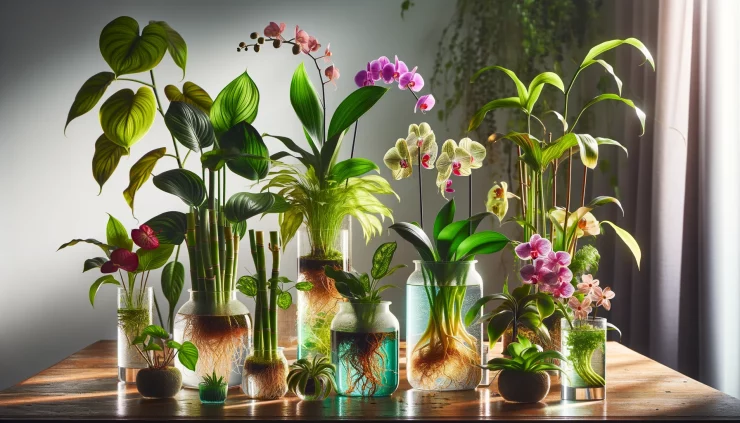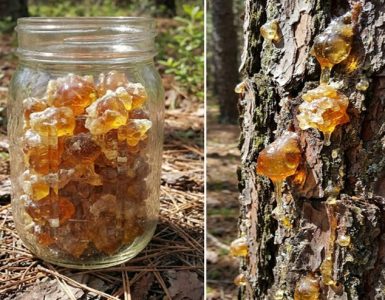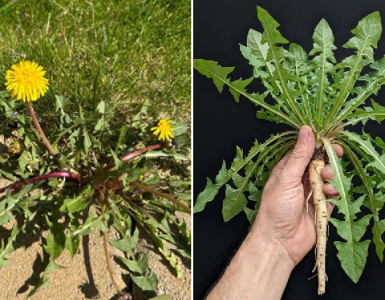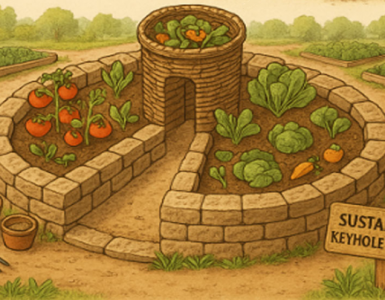Growing plants in water, without the need for soil, is a convenient and clean way to add greenery to your home. This method, known as hydroponics or water culture, allows plants to thrive and even bloom beautifully. Here are seven plants that grow and bloom in water, providing a stunning display without the mess of soil.
1.Peace Lily (Spathiphyllum)
Why It’s Great:
Peace lilies are popular for their elegant white blooms and glossy green leaves. They are also known for their air-purifying qualities.
How to Grow:
Place the root base in a container filled with water, ensuring the crown of the plant is above water to prevent rot.
Change the water every two weeks and keep the plant in indirect sunlight.
2.Lucky Bamboo (Dracaena sanderiana)
Why It’s Great:
Lucky bamboo is believed to bring good luck and prosperity. It has a unique appearance with its tall, slender stalks and lush green leaves.
How to Grow:
Place the bamboo stalks in a glass vase with enough water to cover the roots.
Add pebbles to stabilize the stalks and change the water every two weeks.
3.Philodendron
Why It’s Great:
Philodendrons are versatile and hardy plants with heart-shaped leaves that grow well in water.
How to Grow:
Cut a healthy stem with at least two nodes and place it in a container with water.
Ensure the nodes are submerged and change the water every week.
4.Spider Plant (Chlorophytum comosum)
Why It’s Great:
Spider plants are easy to grow and have striking variegated leaves. They also produce small white flowers.
How to Grow:
Place the root base or a plantlet in a container with water, ensuring the roots are submerged.
Change the water every week and place the plant in bright, indirect light.
5.Begonia
Why It’s Great:
Begonias are known for their vibrant flowers and colorful foliage, making them a beautiful addition to any water garden.
How to Grow:
Place begonia cuttings in a container with water, ensuring the nodes are submerged.
Change the water regularly and keep the container in a bright, warm location.
6.Orchids (Phalaenopsis)
Why It’s Great:
Orchids are exotic plants with stunning blooms that can thrive in water culture.
How to Grow:
Place the orchid’s roots in a glass container with water, ensuring the base of the plant is above water.
Change the water weekly and keep the plant in a well-lit area with indirect sunlight.
7.Water Hyacinth (Eichhornia crassipes)
Why It’s Great:
Water hyacinths are floating plants with beautiful lavender-blue flowers. They are perfect for ponds or water gardens.
How to Grow:
Simply place the water hyacinth in a container with water, allowing it to float.
Ensure the water is changed regularly and the plant receives plenty of sunlight.
Tips for Growing Plants in Water
Use Clean Water: Distilled or rainwater is ideal, as tap water may contain chemicals that can harm plants.
Regular Water Changes: Change the water every one to two weeks to prevent stagnation and provide fresh nutrients.
Proper Light: Ensure the plants receive adequate light, but avoid direct sunlight, which can cause algae growth.
Monitor Growth: Trim roots and stems as needed to encourage healthy growth and prevent overcrowding.
By selecting the right plants and following these simple care tips, you can create a beautiful and thriving water garden. These plants not only add aesthetic value but also bring the benefits of nature into your living space without the need for soil.






Add comment